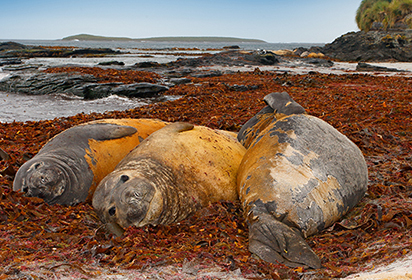Written by Bradt Travel Guides
The Falkland Islands are one of those magical places that capture the imagination, and although the weather is not always clement, the overriding memory is of blue sea, blue sky, teeming wildlife and smoko as soon as you get back indoors. From wildlife, history and culture to remote settlements where you can kick back and get away from it all, there’s something to pique everyone’s interest. Here are five reasons why you should be planning a trip to these otherworldly islands.
Stroll around the colourful capital
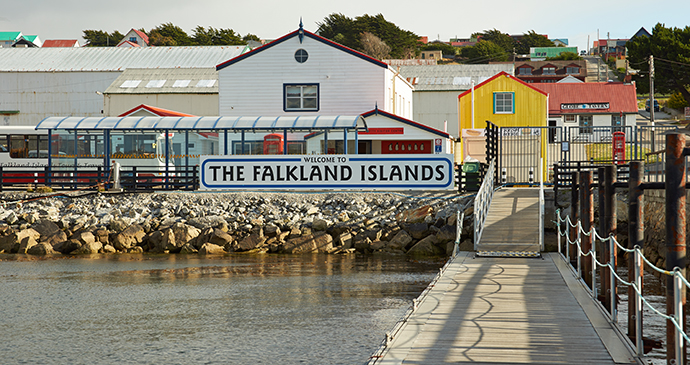
Stanley is probably the smallest and most remote capital city in the world and any itinerary for a visit to the islands should include at least a few days here, exploring the town, its environs and the Historic Dockyard Museum. The town’s compact nature makes it the ideal place to discover on foot; a self-guided walking tour takes in the oldest and most interesting parts. A stroll along the seafront gives views out to some of the town’s shipwrecks, offering a good snapshot of most of the major events to have occurred on the Falkland Islands. Continuing along Ross Road allows you to take in most of Stanley’s major sights, including Government House, the Solar System Sculpture and Christ Church Cathedral, the southernmost cathedral in the world which, along with its whalebone arch, must be one of the islands’ best-known, most-photographed buildings.
Observe five species of penguin in a single day…
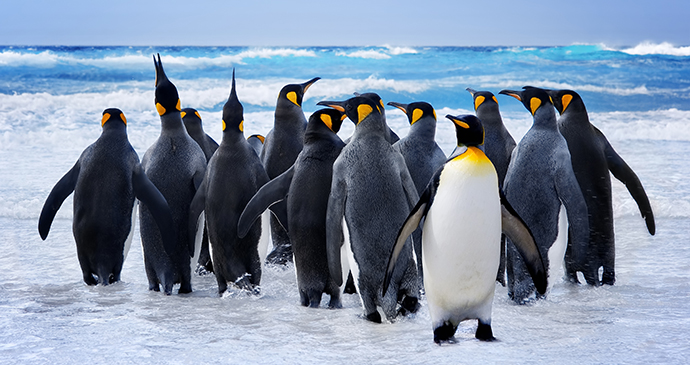
The penguin family are well represented on the islands, with five species nesting annually, plus the occasional vagrant from the Antarctic or sub-Antarctic islands. A visit to the king penguin colony at Volunteer Point on East Falkland is the highlight of many trips, and Pebble Island has four species breeding most summers: rockhopper, gentoo, magellanic and macaroni; king penguin have also been occasionally observed there. Other must-visit locations for penguin lovers include Bleaker and Sea Lion islands.
… and discover an abundance of other wildlife
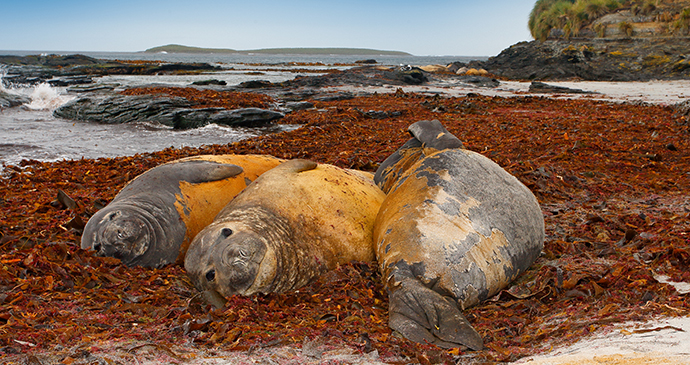
Although the main draw for many, penguins are just one of the many species that wildlife lovers can observe during their visit to the islands. Fur seal, southern sea lion and southern elephant seal all breed along the coastline. Meanwhile, in the water, southern right, sei and long-finned pilot whale, Peale’s and Commerson’s dolphin are all regularly spotted. Back on land, you’re likely to spot a black-browed albatross colony (70% of the world’s population breed here) along the clifftops of some of the westernmost islands. If flora is more your thing, there are a great many attractive flowers hidden away out of the wind. Over 177 species of plants and one hybrid have so far been identified as being native to the islands. Of these, 14 are regarded as endemic (such as the lady’s slipper, coastal nassauvia, hairy daisy and Falkland rock cress), and two others are regarded as near endemic (the Falkland cudweed and shield fern). The native flora is much more diverse than that of any other of the South Atlantic islands.
Learn about the islands’ complex history
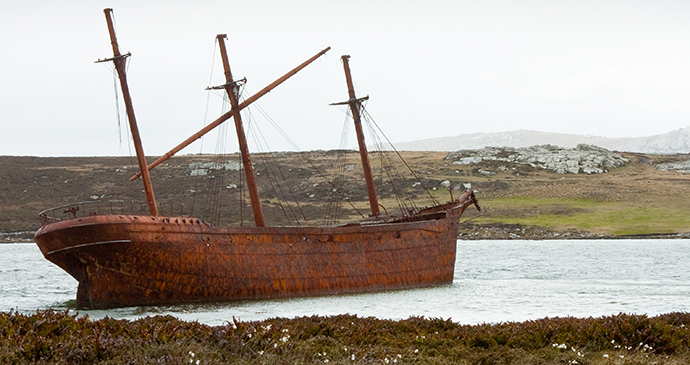
Wildlife aside, history lovers will also be in their element here. On Saunders Island you can visit Port Egmont, the first British base on the islands that was set up in 1765. Today, the largest edifice is the remains of a large, stone-built structure. This was once the living quarters and main building for the British forces stationed here in 1766. Visitors can wander around this small site trying to imagine what it would have been like to be stationed here without any modern amenities. Other historical sites include minefield warning signs and memorials which serve as poignant reminders of the 1982 Falklands War, including Darwin’s Argentine Military Cemetery, where engraved on a row of marble slabs are the names of all of those from Argentina who lost their lives. In Stanley, the military personnel who gave their lives to liberate the islands are remembered on wall surrounding the Liberation Monument. The history of Stanley is also illustrated by the shipwrecks that are dotted along the seafront.
Experience a slower pace of life
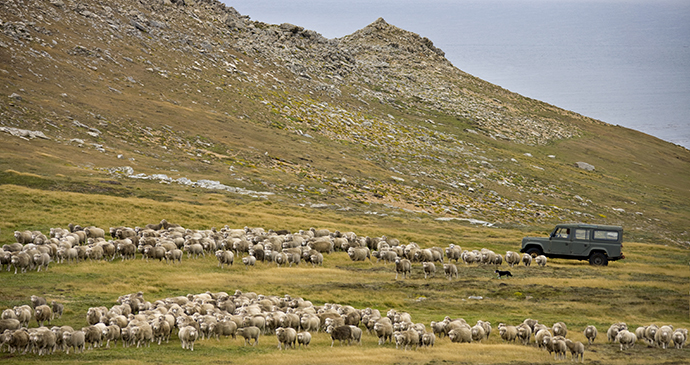
For those truly wanting to get away for it all, the remote settlements located in camp are ideal. One of the best places to experience this unique lifestyle is Port Howard. This working farm is set in some magnificent scenery, is one of the best centres for fishing on the Falkland Islands and constitutes the ideal base to explore the wide expanses of West Falkland. Here, culture lovers can base themselves in the settlement’s lodge, learn about traditional farming methods and sample smoko – homemade cakes and biscuits with tea or coffee.
Inspired to plan a trip to the Falkland Islands? Check out our guide:
